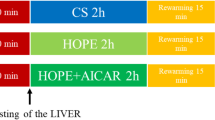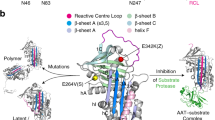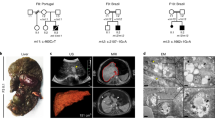Abstract
Summary: A 2-month-old white girl had severe liver disease (but without signs of hepatic necrosis, infection or cirrhosis), urinary cytomegalovirus, transient reduction of α1-antitrypsin concentration and transient abnormal α1-antitrypsin phenotype that were not present in her parents. Five serum specimens that were obtained during the 1½ months of acute phase liver disease indicated, by polyacrylamide gel isoelectric focusing (PAG-IEF), acid starch gel and agarose electrophoresis as well as immunofixation, an unusual α1-antitrypsin phenotype that we labeled delta (Δ). It migrated adjacent to Z, i.e., cathodal of Z and Zpratt on PAG-IEF; anodal of Z but cathodal of X, S, Zpratt on starch gel. We labeled the girl's complete phenotype MΔ. After clinical recovery, her phenotype was MM and identical to that of her parents. Hepatic electron-microscopy of the acute phase specimen showed dilated bile canaliculi. We observed the following in hepatocytes: clusters of globular inclusions surrounded by myelin sheets that, to a lesser extent, also appeared in the liver of CMV-infected children with phenotype MM; dilated endoplasmic reticulum cisternae that contained floccular material; and marked steatosis. These changes were less severe in the convalescent liver specimen.
Speculation: The patient's transient α1-antitrypsin Δ protein may be the result of a postribosomal reduction in sialic acid of M protein triggered perhaps by sever liver disease. If so, we would not expect a further cathodal shift of Pi type Δ after treatment of MΔ serum with neuraminidase. Alternatively, Δ protein might be the product of an α1-antitrypsin allele PiΔ that was transiently activated by the stress of the liver disease as is the juvenile globin gene in the adult goat by erythropoietic stress. The argument for PiΔ would be strengthened if: (1) the identical Δ protein was found in patients with other severe diseases of the liver; (2) the primary structure of Δ protein differed from that of M protein; (3) the material within the cisternae of the patient's hepatocytes was related to α1-anti-trypsin; and (4) neuraminidase treatment of MΔ serum was followed by a further cathodal shift of Pi type Δ.
Similar content being viewed by others
Log in or create a free account to read this content
Gain free access to this article, as well as selected content from this journal and more on nature.com
or
Author information
Authors and Affiliations
Rights and permissions
About this article
Cite this article
Hug, G., Chuck, G. & Bowles, B. Alpha1-Antitrypsin Phenotype: Transient Cathodal Shift in Serum of Infant Girl with Urinary Cytomegalovirus and Fatty Liver. Pediatr Res 16, 192–198 (1982). https://doi.org/10.1203/00006450-198203000-00006
Issue date:
DOI: https://doi.org/10.1203/00006450-198203000-00006
This article is cited by
-
α1-Antitrypsinmangel
Der Internist (2010)
-
Transient aberrancy of α1-antitrypsin glycoprotein microheterogeneity in Pseudomonas aeruginosa septicaemia
Infection (1990)
-
Variation of 789-1789-1789-1glycoprotein microheterogeneity in hepatic postresuscitation disease
European Journal of Pediatrics (1990)
-
Glycogen storage disease Ib: modification of ?1 glycoprotein microheterogeneity
European Journal of Pediatrics (1989)
-
Problems in the diagnosis of tetrahydrobiopterin deficiency
European Journal of Pediatrics (1988)



